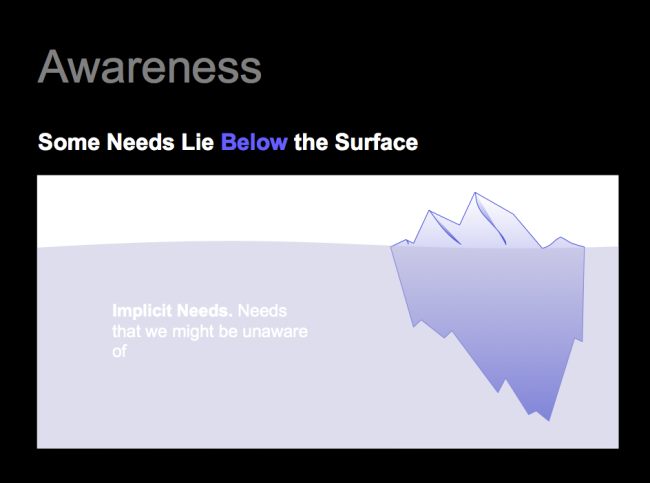News Redesigning the Hospital Birth Experience 2013
NOV. 15
1.) How might we create an interactive way to create a birth plan that is integrated into an EMR, so that parents and clinicians have time to understand the possibilities and limitations in order to set realistic expectations?
2.) How might we create an a la carte menu of premium services for delivering parents so that they feel a unique level of personalization and pampering possibilities in the hospital L&D setting?
3.) How might we develop a system to help moms with premature babies see their baby at all times from their bedside so they feel less stressed and more connected to their newborn?
4.) How might we create a localized heat source for the newly delivered baby so that fast-moving physicians can keep their cool while maintaining a higher temperature for baby?
Project presentations will be up soon on a new “Projects Video” page coming Monday! Thanks to all who participated in this highly experimental Stanford d. School pop-up class.It has been a privilege working with the doctors, parents, CAPE staff, and interdisciplinary Stanford students to make Redesigning the Hospital Birth Experience a reality! What’s next? Stay tuned…
Hopefully you have started to prototype your ideas for our last class Nov. 15. We are super excited to see the ideas come to life with some 3D & paper prototypes, skits, and whatever else you can hack together to communicate your ideas to the doctors and parents who will be joining us again at CAPE to give you feedback.
I will be at CAPE by 5:15 Friday. If you have any questions, or need any advice about prototypes before then, don’t hesitate to e-mail or call me!
Jules
NOV. 13TH
Tomorrow we will be learning about synthesis. How the heck do you take all these insights and turn them into potential solutions? I have some tools that might help…
Check out the photos page. I uploaded the pictures I took tonight and will upload the videos from CAPE by tomorrow afternoon.
I have also uploaded my slide deck for you tonight about need-finding and interviewing.
Looking forward to seeing you tomorrow night!
Jules
Posted in: News
NOV. 13TH CLASS STRUCTURE
I will give you some time to form groups of 2 or 3 at the beginning of class and then I will give a brief talk about how to conduct a successful interview.
After your interviews I will give a second short talk about synthesis and how to begin that process. You will have some time at the end of the interviews to talk with your teammates about some of the most surprising things you learned from the interviewees, and capture those observations right away. Each group will share the most interesting nuggets learned with the rest of the class.
As requested, Dr. Rhine’s slides are up on the website under “Inspiration”. I have also posted photos of last night under the new section “Photos”. These might help you jog your memory about what you observed and experienced last night.
Posted in: News
CLASS STRUCTURE NOV. 12
Here is an outline of what we will be doing/learning at our first class Nov. 12:
Nov. 12: Empathy Immersion + Observation Technique
You will have the opportunity to observe three typical hospital birth scenarios at CAPE. These scenarios will be:
1.) Vaginal Birth
2.) C-Section
3.) Baby resuscitation
We will debrief with simulations nurses, and OB/GYNs to understand what was happening. This entails watching portions of videos of each simulation and studying the activities,environment, interactions, objects and users. You will be given a notebook at the beginning of the class. Write down or sketch anything that stands out for you. What did you see? What did you hear? How did you feel? What questions do you have?
Questions you might ask yourself:
What style is being employed?
What is the mood?
What is the centerpiece?
What are the relationships?
What is the story?
What are the values?
What are the needs (not to be confused with solutions)?
Some thoughts about “needs.”
Needs are verbs. Solutions are nouns.
One need leads to another.
Needs are interrelated and hierarchical.
Any experience is composed of “need bundles.”
Needs cannot be isolated but must be understood in relation to one another (like a language).
People can’t tell you what they need. But if you listen carefully to their stories, people will give you unmistakable clues which reveal their needs. Check out this link about need finding from Michael Barry: Need Finding Tools
Jules and Dr. Rhine will demo a quick interview to prepare you for interviewing clinicians and newly delivered parents the following day. Jules will hand out example field guides to help groups with that process.
Slide Credit: Michael Barry



